I remember the first time I smelled Beef Daube or Daube de boeuf a la Provencale as it is called in France. It was in the home of friends in Seillons, France, a beautiful hillside village in the Var region north of Cannes. We’d just arrived at their home after a long car ride from the airport in Marseilles on the coast. Our friends were supposed to meet us at the airport in nearby Nice when we arrived from the Bahamas via Miami and Heathrow airport, but the French Air traffic Controllers had another plan in mind. They went on strike just before we landed in London with a plane transfer for Nice and that brought all air flights in France to a complete standstill until it was settled. With the trains and busses going south sold out and no available cars for rent, we were faced with spending the night in London and finding a new flight the next day – not an easy thing to do when you’re exhausted and not happy about the idea of a vacation delay. Somehow we got the last two seats going south on a flight the next day to Marseilles, which is west of Nice and a much longer drive for our friends. Being the good friends that they are, they drove over to Marseilles and picked us up and we all headed to Seillons for dinner at their home and a good nights sleep.
As I entered their kitchen, I smelled rich garlic and onions. Curious, I lifted the lid of the pot of meat that was simmering slowly on the stove. “Beef Bourguignon?” I asked. “Oh no, that’s beef daube,” they replied, just like it was an ordinary everyday pot roast. Well, beef daube is a far cry in my mind from Beef Bourguignon or French pot roast because it has its own secret weapon – dried orange peel – which sets it apart and gives it that special touch, or je ne sais quoi, that only the French seem to know how to do.
Today I’ll be cooking Beef Daube from Chef Gui Gedda’s charming cookbook – Cooking School Provence – shop, cook, and eat like a local. The book is laid out in a week long course that takes you to the markets and visits the producers to seek out the best local ingredients, then to the Chef’s kitchen to prepare 100 authentic recipes. It’s broken down by the day of the week to create the spirit of Provence in your own home. He shows step-by-step how to illustrations and you’ll feel as if you’re standing beside him in his kitchen in France. I will also prepare a marinated orange salad or Salade d’oranges, that he suggested for dessert. The chef says you want to serve the lightest and freshest of winter desserts to round off a very hearty meal, such as the daube. This menu is perfect for a dinner party because everything but the side dish is prepared in advance. This book is currently out of print, but copies can be found. It is a real treasure and if you love the foods of Provence, this book is for you.
I’ve sprinkled photos throughout from our trip to Saint-Remy-de-Provence, the village nearest Vicki Archer’s beautifully restored mas and olive groves that I wrote about in my last post here.
If I had known about Chef Gedda’s cookbook I would have taken it along when we went to Provence for our two month trip in 2007. We packed two of Patricia Well’s cookbooks in our suitcase – Bistro Cooking and Patricia Well’s At Home in Provence, which were invaluable and we used almost daily as we brought back goodies from the market to prepare in our kitchen.
Daube de Boeuf a la Provencale - in three easy steps
Adapted from Cooking School Provence –by Guide Gedda
Printable Recipe
Step one - the marinade or La marinade
This makes enough for 4 – 5 lbs of meat. This marinade is traditional for a beef daube but it also can be used for lamb.
After you prepare the meat as instructed below, put it in a large dish or bowl. Add 5 sliced garlic cloves, 3 peeled and sliced carrots (if small, use 5), 2 ribs of chopped celery, and 2 large mild onions, peeled and chopped. Add a 24” strip of orange peel (see below), 3 sprigs of fresh parsley, 2 sprigs of fresh thyme, 2 bay leaves, ½ teaspoon grated nutmeg, 4 whole cloves and 12 crushed black peppercorns. (Chef Gedda also used 1 tsp. of fresh savory leaves and 4 juniper berries, neither of which I could find in our market.) Then pour in 2 T of good red vinegar and one bottle (750ml) of robust dry wine, preferable French. Season with fine salt and freshly ground pepper and gently stir so the pieces of meat are mixed with the liquid and flavorings. Cover and let marinade in a cool room for up to 2 hours, or refrigerate overnight (preferred method). After the meat finishes marinating, carefully lift it out and strain the marinade through a large sieve placed over a bowl. Reserve both the solid ingredients and the liquid.
Step two – drying the orange peel
There are beautiful photos in the book showing Chef Gedda holding an orange firmly in one hand and taking a small knife or vegetable peeler (whichever you prefer) and, starting at the stem end, cutting about an inch wide strip of the peel into long ribbons. Be careful that you don’t cut into the flesh or get any pith. He worked in circles around the orange until he had long ribbon of peel. He suspended the ribbons of orange peel in a dry warm place overnight, such as on a hook near the oven. The strips will be dry enough in 2 or 3 days and you can keep them for up to 3 weeks stored in an airtight container. He suggest using un-waxed or organic fruit, but they aren’t available, you can gently scrub oranges in warm soapy water, rinse thoroughly, drain and pat dry before peeling. Dried orange peel is used in flavoring daubes and fish stews in France.
Step three – preparing the Daube de bouef a la provencale
4 to 5 pounds of boneless bottom round, cut into 1 ½” chunks
La Marinade
Olive oil
½ pound thick-cut bacon, cut crosswise into ½ inch strips (lardons)
1 large mild onion, chopped
2 tablespoons flour
Fine sea salt and freshly ground black pepper to taste
Chopped fresh Italian flat-leaf parsley for garnish
Put the beef chunks in a large bowl and cover with the marinade. Cover and marinate in the refrigerator overnight.
Remove the beef from the bowl and blot dry with paper towels. Set aside. Strain the marinade through a sieve, reserving both the liquid and the solid ingredients, separately.
Place a large, non-stick sauté pan over medium to medium-high heat. Add a little olive oil, then the bacon and onion and cook, stirring frequently, for about 5 minutes until bacon is done and onions are soft. Remove from the pan and set aside. Add some of the beef, sprinkle with a little of the flour, salt and pepper and cook until they are brown on all sides. Take care not to crowd the pan or the meat will stew and not brown. Brown the meat in batches until all have been cooked.
Transfer the browned meat, bacon and onion to a large ovenproof Dutch oven. Add the reserved marinade and vegetables to the beef. If necessary add boiling water so you cover the ingredients. Bring to a boil, then reduce the heat, cover tightly and cook over very low heat for at least 3 hours. Towards the end of cooking, taste and adjust the seasonings to taste. Remove from the heat, let cool, then refrigerate overnight covered.
The next day spoon any fat off of the top of the daube. To serve, reheat very gently in a covered pot over low heat or in a 375 F oven until heated through. Remove the bay leaves, herb sprigs and orange slices. Garnish with chopped parsley. Serves 6.
Notes: If your sauce is not thick enough (ours wasn’t), make a beurre manie by blending 3 T flour with 2 T softened butter to make a paste. Off heat, whisk in the beurre manie, then simmer the sauce for 2 minutes as it thickens. If you find your sauce is too tart (ours was), you can add some finely chopped good chocolate or a bit of honey and let it heat through the dish. I used both as I only had dark chocolate and after I added it, I thought it still needed some honey. Honey is a staple in any kitchen in Provence.
For a side dish, the Chef says that once you’ve spent hours preparing the perfect daube, you don’t want to serve it with anything fussy. Macaronade, (buttered macaroni with parsley) is the preferred authentic Provencale accompaniment, but it is equally good with Pommes de Terre a l’ail et a l’huile d’olive (mashed potatoes with garlic and olive oil).
Salade d’oranges
Adapted from Cooking School Provence –by Guide Gedda
Printable Recipe
4 oranges
4 T. brandy
6 heaping T sugar
1 T grated orange zest
2 T orange flower water
Peel the oranges, removing the white pith. Cut into thin slices and put in a shallow bowl. Sprinkle with the brandy and let sit to macerate in a cool place for about an hour. In the meantime, put the sugar in a saucepan with 1 ¾ cups water and the orange zest. Cook over medium heat, stirring until the sugar has dissolved, then let bubble for 10 minutes without stirring. Remove the syrup from the heat and stir in the orange flower water. Let set until cool, then cover and refrigerate. Spoon the cold syrup over the marinated oranges and stir gently. Serve chilled. Serves 4 – 5. As you can see I sprinkled the salad with a few dried cranberries for color. I don’t know if the Chef would approve or not. I could not find orange flower water so I left it out. By all means, if you can find it, use it.
As I entered their kitchen, I smelled rich garlic and onions. Curious, I lifted the lid of the pot of meat that was simmering slowly on the stove. “Beef Bourguignon?” I asked. “Oh no, that’s beef daube,” they replied, just like it was an ordinary everyday pot roast. Well, beef daube is a far cry in my mind from Beef Bourguignon or French pot roast because it has its own secret weapon – dried orange peel – which sets it apart and gives it that special touch, or je ne sais quoi, that only the French seem to know how to do.
Today I’ll be cooking Beef Daube from Chef Gui Gedda’s charming cookbook – Cooking School Provence – shop, cook, and eat like a local. The book is laid out in a week long course that takes you to the markets and visits the producers to seek out the best local ingredients, then to the Chef’s kitchen to prepare 100 authentic recipes. It’s broken down by the day of the week to create the spirit of Provence in your own home. He shows step-by-step how to illustrations and you’ll feel as if you’re standing beside him in his kitchen in France. I will also prepare a marinated orange salad or Salade d’oranges, that he suggested for dessert. The chef says you want to serve the lightest and freshest of winter desserts to round off a very hearty meal, such as the daube. This menu is perfect for a dinner party because everything but the side dish is prepared in advance. This book is currently out of print, but copies can be found. It is a real treasure and if you love the foods of Provence, this book is for you.
I’ve sprinkled photos throughout from our trip to Saint-Remy-de-Provence, the village nearest Vicki Archer’s beautifully restored mas and olive groves that I wrote about in my last post here.
If I had known about Chef Gedda’s cookbook I would have taken it along when we went to Provence for our two month trip in 2007. We packed two of Patricia Well’s cookbooks in our suitcase – Bistro Cooking and Patricia Well’s At Home in Provence, which were invaluable and we used almost daily as we brought back goodies from the market to prepare in our kitchen.
Daube de Boeuf a la Provencale - in three easy steps
Adapted from Cooking School Provence –by Guide Gedda
Printable Recipe
Step one - the marinade or La marinade
This makes enough for 4 – 5 lbs of meat. This marinade is traditional for a beef daube but it also can be used for lamb.
After you prepare the meat as instructed below, put it in a large dish or bowl. Add 5 sliced garlic cloves, 3 peeled and sliced carrots (if small, use 5), 2 ribs of chopped celery, and 2 large mild onions, peeled and chopped. Add a 24” strip of orange peel (see below), 3 sprigs of fresh parsley, 2 sprigs of fresh thyme, 2 bay leaves, ½ teaspoon grated nutmeg, 4 whole cloves and 12 crushed black peppercorns. (Chef Gedda also used 1 tsp. of fresh savory leaves and 4 juniper berries, neither of which I could find in our market.) Then pour in 2 T of good red vinegar and one bottle (750ml) of robust dry wine, preferable French. Season with fine salt and freshly ground pepper and gently stir so the pieces of meat are mixed with the liquid and flavorings. Cover and let marinade in a cool room for up to 2 hours, or refrigerate overnight (preferred method). After the meat finishes marinating, carefully lift it out and strain the marinade through a large sieve placed over a bowl. Reserve both the solid ingredients and the liquid.
Step two – drying the orange peel
There are beautiful photos in the book showing Chef Gedda holding an orange firmly in one hand and taking a small knife or vegetable peeler (whichever you prefer) and, starting at the stem end, cutting about an inch wide strip of the peel into long ribbons. Be careful that you don’t cut into the flesh or get any pith. He worked in circles around the orange until he had long ribbon of peel. He suspended the ribbons of orange peel in a dry warm place overnight, such as on a hook near the oven. The strips will be dry enough in 2 or 3 days and you can keep them for up to 3 weeks stored in an airtight container. He suggest using un-waxed or organic fruit, but they aren’t available, you can gently scrub oranges in warm soapy water, rinse thoroughly, drain and pat dry before peeling. Dried orange peel is used in flavoring daubes and fish stews in France.
Step three – preparing the Daube de bouef a la provencale
4 to 5 pounds of boneless bottom round, cut into 1 ½” chunks
La Marinade
Olive oil
½ pound thick-cut bacon, cut crosswise into ½ inch strips (lardons)
1 large mild onion, chopped
2 tablespoons flour
Fine sea salt and freshly ground black pepper to taste
Chopped fresh Italian flat-leaf parsley for garnish
Put the beef chunks in a large bowl and cover with the marinade. Cover and marinate in the refrigerator overnight.
Remove the beef from the bowl and blot dry with paper towels. Set aside. Strain the marinade through a sieve, reserving both the liquid and the solid ingredients, separately.
Place a large, non-stick sauté pan over medium to medium-high heat. Add a little olive oil, then the bacon and onion and cook, stirring frequently, for about 5 minutes until bacon is done and onions are soft. Remove from the pan and set aside. Add some of the beef, sprinkle with a little of the flour, salt and pepper and cook until they are brown on all sides. Take care not to crowd the pan or the meat will stew and not brown. Brown the meat in batches until all have been cooked.
Transfer the browned meat, bacon and onion to a large ovenproof Dutch oven. Add the reserved marinade and vegetables to the beef. If necessary add boiling water so you cover the ingredients. Bring to a boil, then reduce the heat, cover tightly and cook over very low heat for at least 3 hours. Towards the end of cooking, taste and adjust the seasonings to taste. Remove from the heat, let cool, then refrigerate overnight covered.
The next day spoon any fat off of the top of the daube. To serve, reheat very gently in a covered pot over low heat or in a 375 F oven until heated through. Remove the bay leaves, herb sprigs and orange slices. Garnish with chopped parsley. Serves 6.
Notes: If your sauce is not thick enough (ours wasn’t), make a beurre manie by blending 3 T flour with 2 T softened butter to make a paste. Off heat, whisk in the beurre manie, then simmer the sauce for 2 minutes as it thickens. If you find your sauce is too tart (ours was), you can add some finely chopped good chocolate or a bit of honey and let it heat through the dish. I used both as I only had dark chocolate and after I added it, I thought it still needed some honey. Honey is a staple in any kitchen in Provence.
For a side dish, the Chef says that once you’ve spent hours preparing the perfect daube, you don’t want to serve it with anything fussy. Macaronade, (buttered macaroni with parsley) is the preferred authentic Provencale accompaniment, but it is equally good with Pommes de Terre a l’ail et a l’huile d’olive (mashed potatoes with garlic and olive oil).
Salade d’oranges
Adapted from Cooking School Provence –by Guide Gedda
Printable Recipe
4 oranges
4 T. brandy
6 heaping T sugar
1 T grated orange zest
2 T orange flower water
Peel the oranges, removing the white pith. Cut into thin slices and put in a shallow bowl. Sprinkle with the brandy and let sit to macerate in a cool place for about an hour. In the meantime, put the sugar in a saucepan with 1 ¾ cups water and the orange zest. Cook over medium heat, stirring until the sugar has dissolved, then let bubble for 10 minutes without stirring. Remove the syrup from the heat and stir in the orange flower water. Let set until cool, then cover and refrigerate. Spoon the cold syrup over the marinated oranges and stir gently. Serve chilled. Serves 4 – 5. As you can see I sprinkled the salad with a few dried cranberries for color. I don’t know if the Chef would approve or not. I could not find orange flower water so I left it out. By all means, if you can find it, use it.













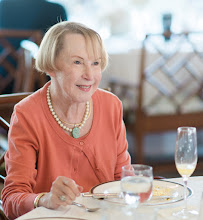



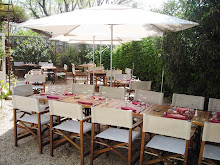

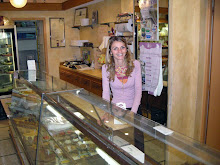





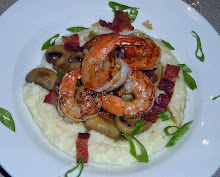

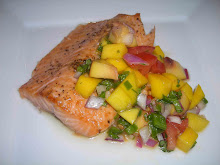












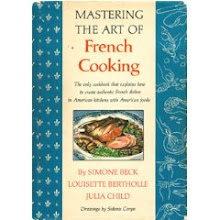

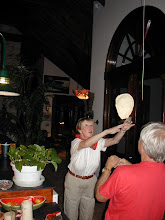
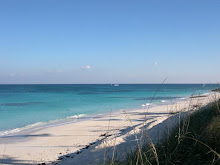


Oh my, I should have never read this while sitting at my desk at work - and hungry. This sounds heavenly.
ReplyDeleteSam this is such an interesting recipe. I could almost taste each ingredient as I read your instructions..it must be incredibly good! I will remember that hint about using chocolate or honey to cut down bitterness.
ReplyDeleteI also enjoyed the background and photographs of this recipe.
You always do such an outstanding job on your blog!
.
Bonjour Sam,
ReplyDeleteThanks for this, you've explained everything so well. I will try this for sure, the orange salad also looks delicious.
Thanks for stopping by and leaving such nice comments.
Bon week and happy cooking!
OH my goodness! The pictures! The recipes! The cookbook that I want!
ReplyDeletePutting oranges on my shopping list and planning to make this for the weekend! Such gorgeous photos too!
ReplyDeleteBeautiful photos Sam, that beef stew looks so delish!
ReplyDeleteWonderful post!
Very impressive and I love how you intertwined this with the story of your travels.
ReplyDeleteOh Sam this sounds lovely as I love orange so much...and of course beef! Chris is right you weave your stories and food memories so well!
ReplyDeleteI just wrote a new poem called Obsession'ably Orange I read last night at open mic, now I am hungry!
Thanks for the pictures. I like the idea of orange salad.
ReplyDeleteSounds Delish!! I can not wait to give this a try. Your pics are amazing.
ReplyDeleteEverything sounds amazing Sam from beginning to end. What a treat for the senses.
ReplyDeleteI have never had this - now I want the entire cookbook. I love the idea of drying an orange peel for this. Would I ever love to get it off in one long peel! This dish is hearty enough for our cold MN winter. The salad is truly a winner. A salad and a dessert. Love the photos. You don't know how my heart sings to look at Provence while it is 2 degrees out. Kudos to your lovely friends!
ReplyDeleteThis post has urged me to start planning my next trip!!! Beautiful place, beautiful food!!!
ReplyDeleteI just got home from a Julia Child event and the hosting Chef, who just happened to be French, was speaking about the difference between Boeuf Bourguignon and a Beef Daube. Then I come home and see your beautiful post - how timely! Not to mention delicious looking:) Bon Appetit!
ReplyDeleteWonderful post! I enjoyed hearing of your experience traveling and seeing your wonderful pictures! The Beef Daube sounds excellent. It is a dish that I was going to make this winter. Thank you for sharing!
ReplyDeleteDelicious! I love this kind of cooking.
ReplyDeleteThank you for sharing.
Enjoy the week.
Just look at those gorgeous, juicy chunks of beef. I am so close to sniffing my screen! This is such a warming dish and the brightness of the orange salad is a nice finish.
ReplyDeleteSam, How beautiful. I remember the first time I made daube. We were in our first apartment and I spent hours in the kitchen and had a stack of dirty dishes before it came out of the oven. I was exhausted but the smell and taste were well worth all of the work. I like your method of doing it in stages. The dessert is perfect. Great post.
ReplyDeleteThe oranges with the brandy do sound like the perfect dessert after this delicious meal! Gorgeous photo!
ReplyDeleteBeautiful photos, Sam. This sounds like a delicious recipe and I'll have to put oranges on my shopping list. Wow! Your postings always make me hungry.
ReplyDeleteanother well written and well told story - you are such a pro! Big shout out to Meakin - these photos look great! You have definitely turned the corner.
ReplyDeleteSam, this looks wonderful. I would probably opt for the lamb unless I were using organic beef, but I can just smell how wonderful it is from your description. Love the pictures of France, too. Very enjoyable post.
ReplyDeleteSpeaking of meat, I'm going to judge the hospitality portion of a BBQ contest tonight. I'm not a tasting judge because I don't eat pork. ;-)
XO,
Sheila :-)
Amazing!!!!
ReplyDeleteTomorrow evening, our cooking club meets, and the theme is French....I am psyched! Your post just made me more excited.
The marinated beef looks incredible! But the orange salad wins my heart..love to add orange water to my frostings!
ReplyDeleteI have a friend in Draguignan who makes a heavenly daube! Yours is spectacular!
ReplyDeleteWhat a wonderful lunch you served your guests! They must have been so thrilled, and grateful for such a meal. Thank you for the wonderful instructions.
ReplyDeleteOh Sam, I love Beef Daube. I have eaten it once - my husband picked me up one day last year from the airport and when we arrived home he had a pot of Beef Daube simmering on the stove. Heaven! It was one of the best things I have ever eaten and to this day I beg him to make me another. Truly a fabulous and very French dish! Yours is beautiful and that orange salad looks so good, too, and I can see how this is the perfect dessert after a Daube!
ReplyDeleteSam I haven't had (nor heard of) Beef Daube before..What have I been missing? It sounds and looks incredible.
ReplyDeleteBtw....love the "facelift" on your blog...great job!! ;)
Oh, Sam, I love your posts. I could feel the frustration of that trip and I could smell the garlic when you walked into the house. This dish is such a classic, and (serendipitously!) my friend Francoise was telling me yesterday that she always dries her orange peels on the radiator and then chops them and keeps them in the freezer to put in any sort of meat dish. I think I'm going to start doing this.
ReplyDeleteThis sort of cooking sounds complex when you're describing it, but it feels natural when you're doing it. Thank you for the clear description.
This dish is probably easy when it is done in steps. It still sounds like a lot of work--it sounds wonderful!
ReplyDeleteI think you are in orange country, as this is the second orange "salad". Which, by the way, sounds heavenly!
Ciao!
oh wow I adore this area of France your beef looks perfect oh I want some and what great friends thats a long drive
ReplyDeleteYour photos of Provence are beautiful! I will have to try Daube de Boeuf a la Provencale, it looks savory and hearty!
ReplyDeleteWonderful recipe and I love reading the story about your travels intertwining with the meal. The orange salad really has my mouth watering!
ReplyDeleteMerci, Sam, for a wonderful tour of France!
ReplyDeleteI have read through both your France posts and felt transported.
Your post is a masterpiece. I enjoyed reading it. Almost forgot, I was checking out the recipe.
ReplyDeleteI love the long piece of orange peel although I am not sure I could pull it off.
This is a beautiful post..recipe..words..photographs..I know Marseilles to Nice..Good friends!!!
ReplyDeleteYour daube and salad are very appetizing! What lovely recipes!
ReplyDeleteCheers,
Rosa
Fantastic photos i am drooling jsut looking at it and what a perfect idea to have an orange salad, I have just taken some oranges off the tree this morning............ Mnmmm Know what I am going to be making for dinner.I have bookmarked your blog and will return often. Don´t be surprised to see me blog about some variations.
ReplyDeleteSam, the way you describe these two dishes and their surrounding the first time you had them is a vision of poetry. I can almost smell the garlic of the Beef Daube and the brilliant orange just begs to be tasted ~ you add an elegance to them through your words, making me hungry for each one of them.
ReplyDeleteAll of your photographs are marvelous, too. With each photo inviting us to step through and enjoy the moments that you captured. They all really do inspire me to book a ticket to their locations.
Many many thanks for posting such a beautiful article...
This daube is just amazing! Although it is somewhat time-intensive, I have no doubt it is well worth it. And I actually have all the spices, herbs and seasonings (am I finally reaching the point of 'well-stocked pantry'?) 8-)
ReplyDelete